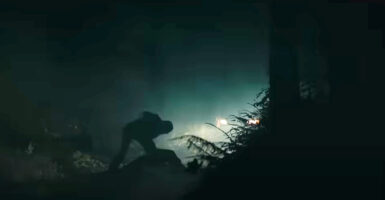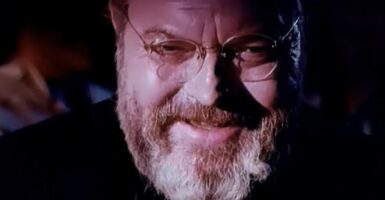The Orson Welles Folk Horror Oddity That Creators Had To Sue For Control

The contributions of Orson Welles to film are too numerous to mention, particularly when one factors in his brilliance behind the revolutionary movie Citizen Kane and his masterful direction of numerous Shakespeare film adaptations. But in a radio, film, and television resume so vast, there are sure to be some projects that make one wonder what this icon was thinking when he got himself involved. One such doozy of a film was 1972’s Necromancy, a movie that was wrought with cuts and recuts that led to lawsuits and, eventually, an altered re-release that made it all the more absurd.
Not What Orson Welles Signed Up For

The Orson Welles movie has two distinct versions, one being the original theatrical release and the second a home video version produced a decade later when Paragon Video Productions secured the rights. The difference between the two versions is startling, with the VHS release in 1983 having newly filmed footage to give Necromancy a nearly soft-core early Cinemax feel to it. This second version was renamed The Witching (VHS only), but a remastered Blu-Ray was released in 2016 that contains the original theatrical release.
A Young Couple Moves To The Wrong Town

Necromancy is the story of a young couple, Lori and Frank, who have just relocated from Los Angeles to the small village of Lilith. Lori recently suffered a stillbirth, and Frank took a marketing position at a toy company near their new community to afford their fresh start. Orson Welles plays the role of Frank’s eccentric new boss, a man of great influence in Lilith who is obsessed with the black magic art of necromancy.
Orson Welle’s character, Mr. Cato, is revealed to have lost his young son some time ago and became obsessed with trying to resurrect him from the grave. As Necromancy continues, the small community of Lilith is exposed as a large coven of witches that are working to use Lori’s latent supernatural powers to bring Mr. Cato’s son back to life. Horrific apparitions, fevered hallucinations, and the ultimate betrayal await Lori as Mr. Cato and his comradery of witches attempt to sacrifice her to return the dead child to life.
Director Sued For Creative Control

The director, Bert I. Gordon, had a falling out with the production company and filed a suit in court to regain the creative control he felt was lost. The end result was in Gordon’s favor, but the court only gave him three weeks to give the production company a final cut. Despite having a star like Orson Welles as the star, Necromancy was doomed as a rush job that was panned by critics and disliked by most audiences.
Altered Into Something Wildly Different

Fast forward to 1983, when the Orson Welles film was subjected to alterations by Paragon Video Productions. The company added a bevy of gratuitous nudity, filming new scenes that depicted scenes that not only added zero merit to the film, but made the plotline more inconsistent and a bit more confusing. All the release of The Witching succeeded in was capitalizing on the base release of Necronomancy and making it an ultra-low-budget soft-core adult film that is pretty laughable.
Available To Stream For Free


REVIEW SCORE
With or without the alterations, Orson Welles is the only worthwhile contribution to the film. Necromancy could have been a decent horror entry, as the premise sounds great on paper. However, the bickering between the initial production company and the rush to finish the film eliminated much hope, leading to a sad 1.0/5.0-star film. There are certainly much better cult horror films from the era to enjoy that won’t leave you disappointed.
You can see for yourself the weirdness of Orson Welles and Necromancy by streaming it for free on Popcorn Flix or On Demand with Prime.












